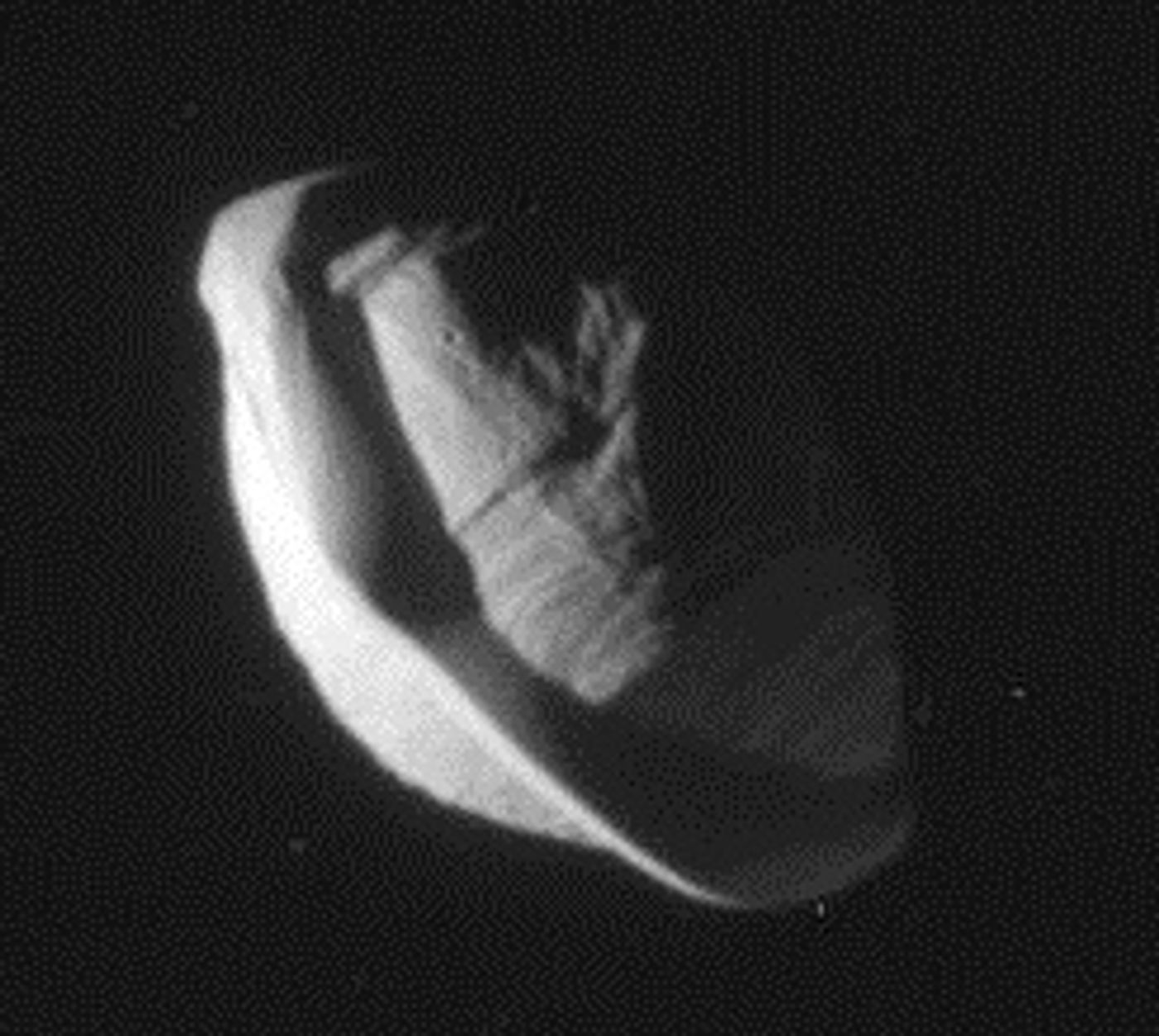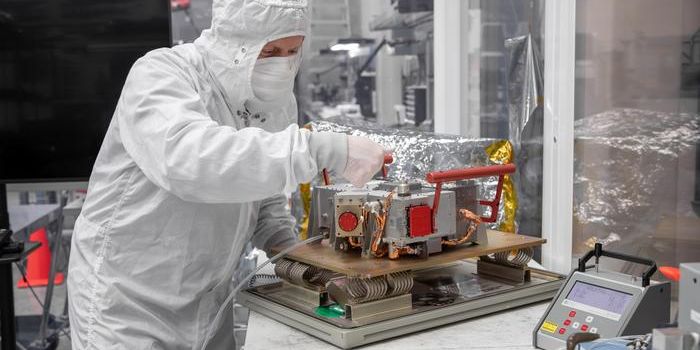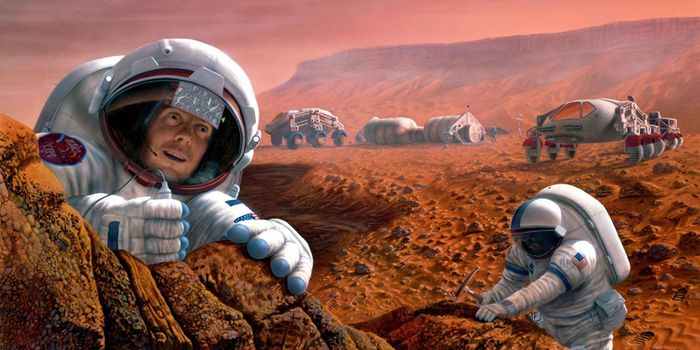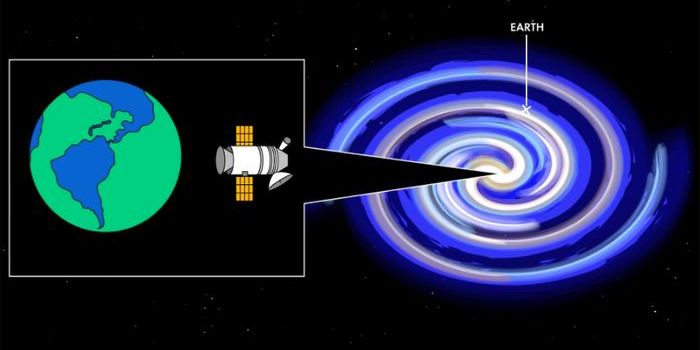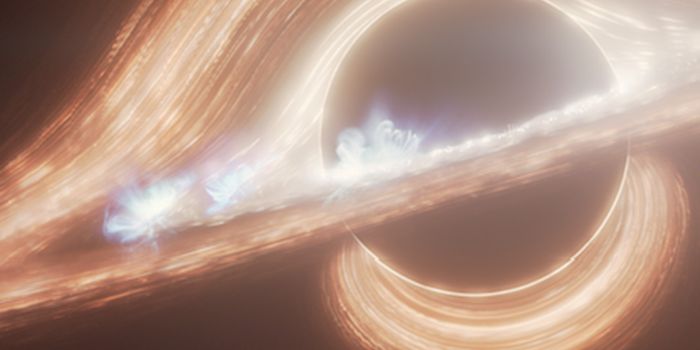Solar System Moons: Pan
Image of Pan taken by NASA's Cassini spacecraft in March 2017. (Credit: NASA/JPL-Caltech/Space Science Institute)
If one were to argue that space is made of food, one such moon of Saturn would make a great case for it, as this ravioli-shaped object orbits the ringed planet while exhibiting a ring of its own, only it’s a lot more solid than Saturn’s massive hula hoops and is often referred to as its equatorial bulge. This is Saturn’s moon, Pan, which was discovered by M.R. Showalter in 1990 after examining Voyager 2 images from 1981.
Edge-on image of Pan taken by NASA's Cassini spacecraft in March 2017. (Credit: NASA/JPL-Caltech/Space Science Institute)
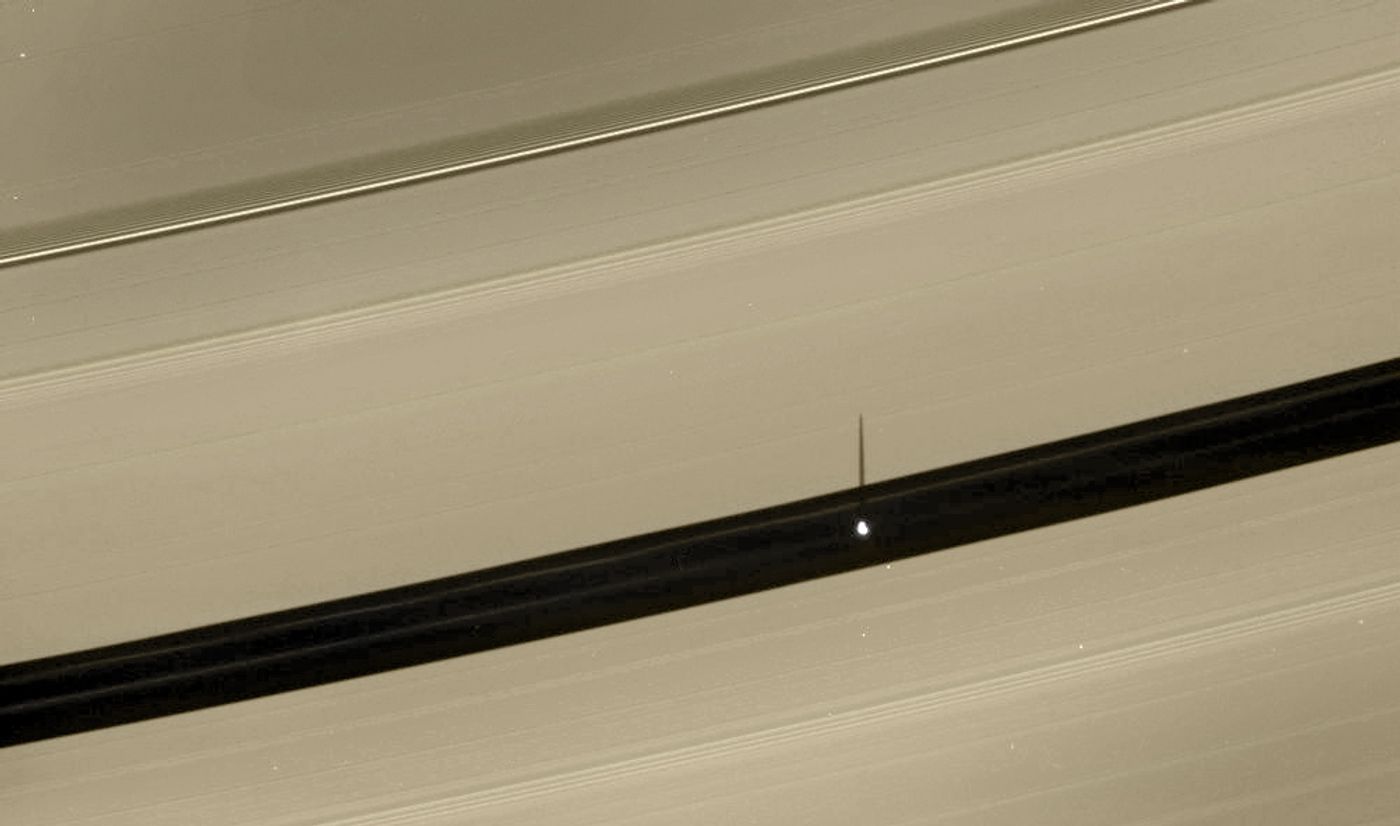
Pan is the innermost of Saturn’s 83 known moons, and quite small with an average radius of only 8.8 miles (14.1 kilometers) and orbits Saturn at an average distance of approximately 83,000 miles (134,000 kilometers). The moon is responsible for maintaining the Encke Gap, which exists within Saturn’s A ring, which also explains the moon’s equatorial bulge as it collects debris from the Gap itself. During its orbit through the Gap, Pan creates what are known as “wakes” within both sides of the ring material as the moon travels through the Gap and gives the material gravitational “kicks”, as well.
While the moons of Saturn have been traditionally named after Greco-Roman Titans, as well as their descendants, Pan was named after the Greek god of nature and the forest.
While Voyager 2 discovered Pan, NASA’s Cassini spacecraft imaged the moon’s traverse through the Encke Gap in the 2000s. With the end of the Cassini mission, there are currently no missions exploring Saturn and its moons, and nothing planned to explore this ravioli-shaped wonder, as well.
As always, keep doing science & keep looking up!

